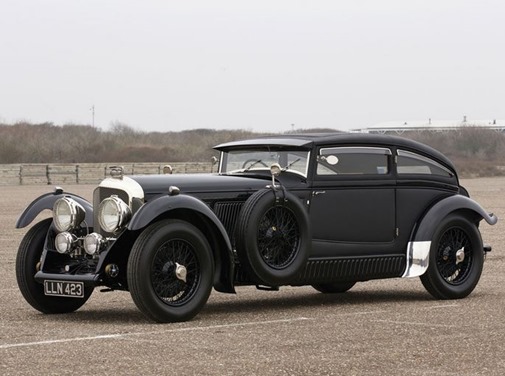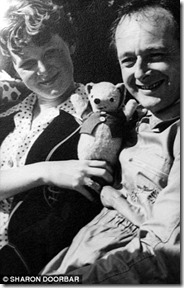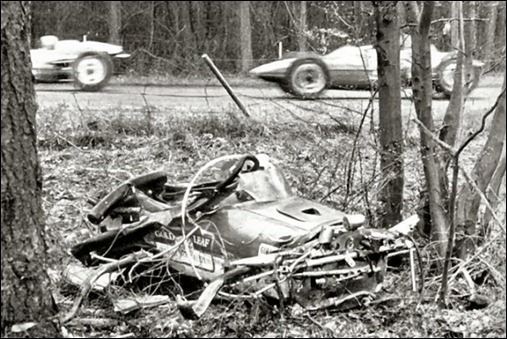
Hellé Nice (born Mariette Hélène Delangle 15 December 1900 in Aunay-sous-Auneau, Eure-et-Loir, France; died 1 October 1984 in Nice, France) was a model, dancer, and a Grand Prix motor racing driver.
 Racing career
Racing career
At the time, the Paris area was one of the principal centres of the French car industry and there were numerous competitions for auto enthusiasts. Nice loved the thrill of driving fast cars and so snatched the chance to perform in the racing event at the annual fair organized by fellow performers from the Paris entertainment world. An athletic woman, she was also an avid downhill skier but an accident on the slopes damaged her knee and ended her dancing career. Perhaps inspired by Charlotte Versigny who had competed in a Talbot racer in the 1927 Grand Prix de la Baule, Hellé Nice decided to try her hand at professional auto racing. In 1929, driving an Omega-Six, she won an all-female Grand Prix race at Autodrome de Montlhéry in the process setting a new world land speed record for women. Capitalizing on her fame, the following year she toured the United States, racing at a variety of tracks in an American-made Miller racing car.
Philippe de Rothschild introduced himself to her shortly after her return from America. For a time, the two shared a bed and the love of automobile racing. Rothschild had been racing his Bugatti and he introduced her to Ettore Bugatti. The owner of the very successful car company thought Nice would be an ideal person to add to the male drivers of his line of racing vehicles. Having been outspoken in her desire to compete with the men, she achieved her goal and in 1931 and drove a Bugatti Type 35C in five major Grands Prix in France. A master of showmanship, Hellé Nice was easily recognizable in her bright-blue race car. She loved every minute of her life and exploited her femininity, portraying herself as a fearless competitor up against hard-driving men. She wowed the crowds wherever she raced while adding to her income with a string of product endorsements. Although she did not win a Grand Prix race, she was a legitimate competitor, and frequently finished ahead of some of the top male drivers .
 Over the next several years, as the only female on the Grand Prix circuit, Nice continued to race Bugattis and Alfa Romeos against the greatest drivers of the day including Tazio Nuvolari, Robert Benoist, Rudolf Caracciola, Louis Chiron, Bernd Rosemeyer, Luigi Fagioli, and Jean-Pierre Wimille, among others. Like most race drivers, she competed not only in Grand Prix races but also hillclimbs and rallies all over Europe, including the famous Monte Carlo Rally. On 10 September 1933, she was a competitor in one of the most tragic races in history. During the 1933 Italian Grand Prix at the Autodromo Nazionale Monza, Giuseppe Campari, Baconin "Mario Umberto" Borzacchini, and the Polish count Stanislas Czaikowski, three of the leading race drivers of the day, were killed.
Over the next several years, as the only female on the Grand Prix circuit, Nice continued to race Bugattis and Alfa Romeos against the greatest drivers of the day including Tazio Nuvolari, Robert Benoist, Rudolf Caracciola, Louis Chiron, Bernd Rosemeyer, Luigi Fagioli, and Jean-Pierre Wimille, among others. Like most race drivers, she competed not only in Grand Prix races but also hillclimbs and rallies all over Europe, including the famous Monte Carlo Rally. On 10 September 1933, she was a competitor in one of the most tragic races in history. During the 1933 Italian Grand Prix at the Autodromo Nazionale Monza, Giuseppe Campari, Baconin "Mario Umberto" Borzacchini, and the Polish count Stanislas Czaikowski, three of the leading race drivers of the day, were killed.
Crash
In 1936, Nice traveled to Brazil to compete in two Grand Prix races. During the São Paulo Grand Prix, she was in second place behind Brazilian champion Manuel de Teffé when a freak accident resulted in her nearly being killed. Reports on the matter vary, but a bale of straw ended up on the track and she slammed into it at more than 100mph causing her to lose control. Her Alfa Romeo somersaulted through the air and crashed into the grandstand, killing four race fans and injuring more than thirty others. Nice was thrown from the car and landed on a soldier who absorbed the full impact of her body, saving her life. The force of the impact killed the soldier and because she lay unconscious, she too was thought to be dead. However, taken to hospital, she awoke from a coma three days later and after two months convalescing was discharged from the hospital. The tragedy turned her into a national hero amongst the Brazilian population. A large number of families even began naming their children Helenice or Elenice after her. Although Nice never spoke about it publicly, the Brazilian race accident had a profound impact and the memory of the events haunted her for the rest of her life.

Comeback
In 1937, Nice attempted a racing comeback, hoping to compete in the Mille Miglia and at the Tripoli Grand Prix, which offered a very substantial cash prize. However, she was unable to get the necessary backing and instead participated in the "Yacco" endurance trials for female drivers at the Montlhéry racetrack in France. There, alternating with four other women, Nice drove for ten days and ten nights breaking ten records that still stand to this day. For the next two years, she competed in rally racing while hoping to re-join the Bugatti team. However, in August 1939, her friend Jean Bugatti was killed while testing a company vehicle and a month later, racing in Europe came to a halt with the onset of World War II.
In 1943, in the middle of the German occupation of France, she moved to the warm climate of the French Riviera and acquired a home in the city of Nice where she lived with one of her lovers for the remainder of the war.

Accusations
In 1949, the first Monte Carlo Rally after the war took place in nearby Monaco and Nice was there to take part. At a large party organized to celebrate the return to racing, Louis Chiron, a multiple Grand Prix champion and Monaco’s favorite son, suddenly strode across the room and in a loud voice laced into Hellé Nice, accusing her of being a Gestapo agent during the war. At the time, such an accusation could be a serious setback for anyone’s career, but coming from someone as powerful as Chiron, even though he provided no proof, it spelled the end of Nice’s racing career.
Dropped by her sponsors, she never raced again and because of the accusation, her name and great accomplishments were virtually obliterated from the annals of racing history. Ostracized by friends and acquaintances, her lover soon abandoned her. With him went a great deal of her money and quickly the meager funds she had left deteriorated to the point where she was forced to accept charity from a Paris organization that had been established to give a bit of help to former theatre performers who had fallen on hard times.

Further
No facts on Chiron’s accusation ever came to light and recent research by Miranda Seymour, author of Nice’s biography published in 2004, could find nothing to substantiate such a charge. A respected biographer, Seymour went so far as to check the official records in Berlin and was advised by the German authorities Nice had never been an agent. Ironically, Chiron himself, led by the lure of a superior car, had driven for the Mercedes-Benz team, which the Nazis were using as an object of propaganda for their philosophy of racial superiority, at a time when his Jewish colleague and rival René Dreyfus could not.
Final years
One of the 20th Century’s most colourful and illustrious pioneering women who had successfully competed in more than seventy events at the highest echelon of automobile racing, spent her final years in a sordid rat-infested apartment in the back alleys of the city of Nice, living under a fictitious name to hide her shame. Estranged from her family for years, she died penniless, friendless, and completely forgotten by the rich and glamorous crowd involved in Grand Prix motor racing. Her cremation was paid for by the Parisian charity organization that had helped her, and the ashes were sent back to her sister in the village of Sainte-Mesme near her birthplace and where her parents were buried. Nevertheless, Nice is not mentioned on the family’s cemetery memorial. Text from Wikipedia
59.913820
10.738741
Read Full Post »










































